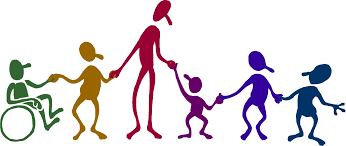Seeing a personal coach means that your grey matter is going to be challenged to re-wire and draw on unused mental potential. It takes energy to develop self-awareness, insight and adapt so, to help you on your way, here are some natural brain boosters that you can incorporate into your diet. If you're very eager, why not include these in your weekly diet for a month and measure if you recognise any improvement. (Don't forget, for optimum results reduce brain numbing products like alcohol and sweets.)
- Fatty Fish/ Oily Fish
I think we all know about Omega's by now, but they are still one of the best fatty acids we can consume, given the brain is composed of 60% fats. Fatty fish is a brilliant source of Omega-3 fatty acids and as a building block to the brain, essential in high performance thinking. Research has indicted that Omega-3 and Omega-6 can statistically significantly improve restlessness, aggressiveness, the ability to stay on task (completing work) and academic performance in children with ADHD. It is a natural focus enhancer. The essential fatty acids vital for brain function that are found in fish oil, can not only slow cognitive decline, but can help prevent brain atrophy in older adults, particularly important in treating Alzheimer's. For those suffering anxiety and depression, some research has indicated taking fish oil in childhood may prevent you from developing anxiety or depression later in life. All up fatty fish is a must for brain performance and cognitive longevity.
- Pumpkin seeds
An acquired taste for some, Pumpkin seeds are rich in many micronutrients that are important for brain function, including copper, iron, magnesium and zinc. Instead of taking a tablet for each of these, a handful of pumpkin seeds scattered over a meal (try salads) and as a snack allows you to consume all these micronutrients in one go. Like with fatty fish oils and Omega 3 and 6, pumpkin seeds are known for their role in improving mental health, aiding memory and supporting healthy brain development. The benefits of pumpkin seeds go well beyond just Omegas. They contain a high amount of magnesium, which has a calming effect on the brain. A good stress relief option.
- Blueberries
Blueberries are packed with antioxidants that may delay brain aging and improve memory. Eating blueberries has been suggested to improve thinking and memory skills. In times of tackling new tasks and absorbing novel information, blueberries are a great option to increase cognitive performance and recall. It is another preventative nutrient. According to animal research in 2006, blueberries help protect the brain from oxidative stress and may reduce the effects of age-related conditions such as Alzheimer's disease or dementia.
- Turmeric
Who would have thought this brilliant yellow powder could be so beneficial? Turmeric and its active compound curcumin, has strong anti-inflammatory and antioxidant benefits, which help in brain development. Primarily Turmeric is thought to improve the working memory and attention spans. There has been discussion and research on Turmeric's ability to regenerate brain cells. As the spice that gives curry its yellow colour, Turmeric has been used in India for thousands of years as a spice and medicinal herb.
- Broccoli
Broccoli, the little trees of vegetables, contains several compounds that have powerful antioxidant and anti-inflammatory effects and helps in brain development. Broccoli is a source of two crucial nutrients that help improve brain function. Vitamin K helps to strengthen cognitive abilities while Choline has been found to improve memory. Research has indicated people who eat plenty of broccoli perform better on memory tests.
So, there you have it. Five easily available foods and spices that are believed to enhance your brain performance and increase attention spans and memory. They also are believed to be preventative for cognitive decline and anxiety, as well as offering stress support.
Given all the benefits, why wouldn't you include these options into your weekly diet and give yourself the optimum chance of a healthy, high performing brain now and as you grow wiser.
To test your memory and speed in decision making, this website has easy timed games that are a simple way of testing your skills http://www.memozor.com/memory-game-online-free/for-adults/easy-memory/shapes.
If you have success. share your story on my Instagram or facebook or write to me direct on the contact page.
You could also try this recipe for a start.
Achari broccoli and pumpkin
To make this an all-round brain booster, toss in some pumpkin seeds. Select an omega rich fish and add to the curry cooked or on the side. Serve with fresh blueberries for desert (can't go past indulging in a slow cooked blueberry and lime cheesecake).
Ingredients
Serves: 4
- 100g broccoli
- oil as needed
- 1/4 teaspoon jeera seeds
- 1/4 teaspoon fenugreek seeds
- 1/4 teaspoon onion seeds
- 1/4 teaspoon rai (brown mustard seed)
- 2 red chillies, chopped
- 2 onions, finely chopped
- 1/4 teaspoon ground turmeric
- 1 teaspoon salt
- 1/2 teaspoon ground coriander
- 100g pumpkin - peeled, seeded and chopped
- 60ml water
- 1/4 teaspoon sugar
- 1/4 teaspoon red chilli powder
- 1/4 teaspoon amchoor powder
- 1 tomato, seeded and finely chopped
- salt to taste
Method
Prep:10min › Cook:20min › Ready in:30min
- Boil 2 cups of water with 1/2 teaspoon salt, add the broccoli and cook until it is tender. Remove and let it cool.
- In a wok or pan heat oil and add jeera, fenugreek seeds, onion seeds, rai and red chilli. Let it fry for 1 minute; after that add onion. Saute onion till it changes to light brown.
- Add the turmeric, salt, coriander and pumpkin. Add 60ml of water and cook it on low flame until the pumpkin becomes tender, about 10 minutes. Pumpkin should become tender but retain its shape.
- Stir in the broccoli and sprinkle some sugar, red chilli powder and amchoor powder. Stir in the tomatoes; season to taste with salt.
(full recipe on http://allrecipes.co.uk/recipe/22773/achari-broccoli-and-pumpkin.aspx)
 Rudeness. Blunt, unedited honesty appears as a negative, particularly when you express your view without having been asked for it in the first place. When we are rude, our motivation is not to share opinion but to hurt someone. Intent defines the distinction. To start with, while straight talking is about delivering an honest, if not direct, message, rudeness is focused on being offensive, impolite and bad mannered. There is no grace in being rude. There is no respect or manners in being rude. When we hide behind, ‘I was just telling the truth,’ as we attack someone with false honesty, we are kidding ourselves. And the person we have offended knows it.
Rudeness. Blunt, unedited honesty appears as a negative, particularly when you express your view without having been asked for it in the first place. When we are rude, our motivation is not to share opinion but to hurt someone. Intent defines the distinction. To start with, while straight talking is about delivering an honest, if not direct, message, rudeness is focused on being offensive, impolite and bad mannered. There is no grace in being rude. There is no respect or manners in being rude. When we hide behind, ‘I was just telling the truth,’ as we attack someone with false honesty, we are kidding ourselves. And the person we have offended knows it.




 and whoever else needed my time on that day every hour.
and whoever else needed my time on that day every hour. body. Feelings play out in the theatre of the mind."
body. Feelings play out in the theatre of the mind." The role of emotion is similar to many other purposes within our bodies: for survival. It is emotions that kick off our responses and reactions to things, and can enable t body to take action if required. Our emotions may not always be logical, but to our primitive brains, it’s all about survival –at any costs – and so pursuing safety is always our brain’s #1 agenda.
The role of emotion is similar to many other purposes within our bodies: for survival. It is emotions that kick off our responses and reactions to things, and can enable t body to take action if required. Our emotions may not always be logical, but to our primitive brains, it’s all about survival –at any costs – and so pursuing safety is always our brain’s #1 agenda.



 Some things you might like to consider:
Some things you might like to consider: We all have different comfort levels and skills when connecting with other people. Some people have an easier time of connecting with others- they seem to thrive or be in their element; other people might like to connect with others, but struggle to be around large groups of people for too long, preferring smaller groups or one-on-one time; some people feel quite uncomfortable with this whole area but wish to connect with others. If you struggle with shyness, social anxiety or if you’re not too confident with all of this, seek help from a psychologist who may be able to help with some skills and strategies.
We all have different comfort levels and skills when connecting with other people. Some people have an easier time of connecting with others- they seem to thrive or be in their element; other people might like to connect with others, but struggle to be around large groups of people for too long, preferring smaller groups or one-on-one time; some people feel quite uncomfortable with this whole area but wish to connect with others. If you struggle with shyness, social anxiety or if you’re not too confident with all of this, seek help from a psychologist who may be able to help with some skills and strategies.